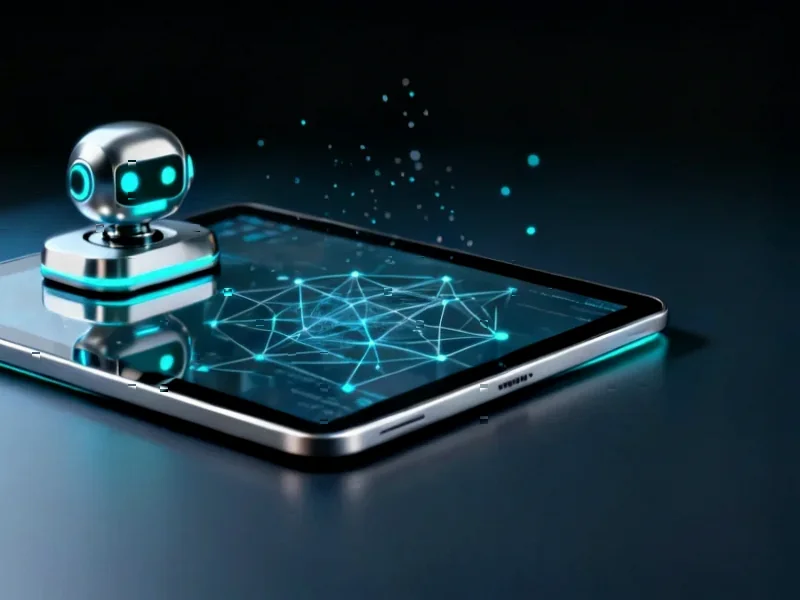According to Wccftech, OpenAI has restructured its partnership with Microsoft to specifically exclude consumer hardware from Microsoft’s intellectual property rights, effectively removing Microsoft’s influence over OpenAI’s upcoming consumer AI device. The company has been collaborating with former Apple designer Jony Ive on developing what’s being described as an “Apple iPhone killer” that could potentially make smartphones obsolete. OpenAI acquired Ive’s AI device startup, io, for $6.4 billion in May 2025 and has since hired approximately two dozen Apple employees, including manufacturing design expert Matt Theobald and human interface design lead Cyrus Daniel Irani. This strategic move comes as OpenAI prepares for a potential public offering, with the hardware independence being a critical component of the renegotiated partnership terms.
Table of Contents
The Hardware Independence Gambit
Microsoft’s decision to carve out consumer hardware from its IP rights represents a calculated strategic pivot rather than a simple contractual adjustment. For Microsoft, this move acknowledges that competing directly with Apple in consumer hardware through OpenAI could create conflicting interests, given Microsoft’s own Surface device lineup and broader ecosystem partnerships. The separation allows OpenAI to pursue radical hardware innovation without being constrained by Microsoft’s existing product roadmap or market positioning. This is particularly significant given that Microsoft has invested billions in OpenAI, making this hardware exclusion a substantial concession that signals confidence in OpenAI’s independent direction.
The Jony Ive Premium and Design Philosophy
OpenAI’s $6.4 billion acquisition of Jony Ive’s io startup represents one of the most expensive talent acquisitions in tech history, reflecting the premium placed on design leadership in the AI hardware space. Ive’s involvement suggests that OpenAI understands that successful AI hardware must transcend mere functionality to achieve the kind of emotional resonance that made the iPhone iconic. The hiring of two dozen Apple veterans, including specialists in manufacturing design and human interface, indicates a comprehensive approach that combines Ive’s visionary design with practical execution expertise. This team composition suggests they’re building not just another gadget, but an entirely new interaction paradigm that could challenge the touchscreen dominance that has defined mobile computing for nearly two decades.
The Path to Actual iPhone Disruption
The notion of an “iPhone killer” has become something of a tech industry cliché, with numerous failed attempts from companies like Google, Microsoft, and Amazon. What makes OpenAI’s approach different is the timing—we’re at an inflection point where AI capabilities are advancing faster than traditional smartphone innovation. However, the challenges are monumental: battery life for always-on AI devices, privacy concerns with ambient computing, network dependency for cloud-based processing, and the fundamental hurdle of convincing consumers to abandon their familiar smartphone ecosystems. The real competition isn’t just about creating a better device—it’s about building an entire alternative ecosystem that can compete with Apple’s deeply integrated hardware, software, and services.
Broader Industry Implications
This development signals a potential fragmentation in the AI hardware landscape, with major players pursuing divergent strategies. While Apple is reportedly working on integrating more advanced AI into its existing devices, and Google is focusing on AI-enhanced Android experiences, OpenAI appears to be betting on a clean-slate approach. The success or failure of this venture will likely influence whether other AI companies follow suit with dedicated hardware or continue pursuing software-only solutions. If successful, OpenAI could establish a new hardware-software integration model that bypasses traditional operating systems altogether, potentially creating a new category of AI-native devices that operate fundamentally differently from today’s smartphones and computers.
Realistic Timeline and Adoption Challenges
While the ambition is clear, the path to market for such a revolutionary device faces significant hurdles beyond just technical execution. Consumer behavior around smartphones is deeply entrenched, with most users having invested years in building their app ecosystems, digital habits, and accessory collections. The transition would require not just a superior product, but a compelling enough value proposition to overcome massive switching costs. Additionally, regulatory scrutiny around AI and data privacy continues to intensify, which could impact the device’s functionality and market availability. The true test will be whether OpenAI and Ive can create something that feels genuinely necessary rather than merely novel—a challenge that has defeated many well-funded competitors in the past.



